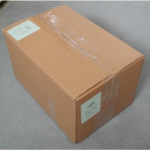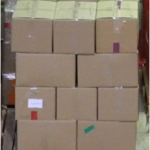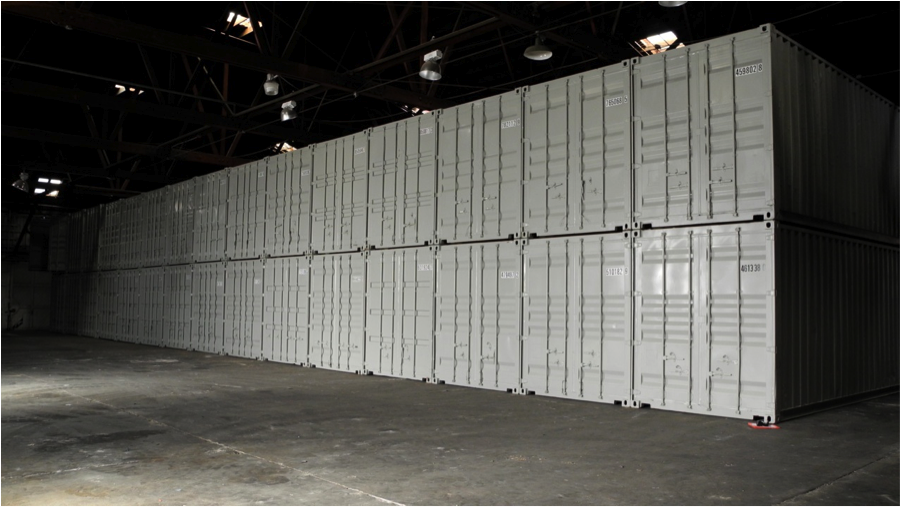Is It Safe to Upload Books From Archive.org
by Brewster Kahle, June 2011 Printing on this: NYtimes
Books are being thrown away, or sometimes packed away, as digitized versions go more than available. This is an important fourth dimension to programme carefully for there is much at stake.
Digital technologies are irresolute both how library materials are accessed and increasingly how library materials are preserved. Afterwards the Internet Archive digitizes a book from a library in order to provide free public access to people world-wide, these books go back on the shelves of the library. We noticed an increasing number of books from these libraries moving books to "off site repositories" (1 2 3 4) to make space in central buildings for more meeting spaces and work spaces. These repositories accept filled apace and sometimes prompt the de-accessioning of books. A library that would prefer to not be named was found to be thinning their collections and throwing out books based on what had been digitized by Google. While we sympathise the need to manage physical holdings, nosotros believe this should be washed thoughtfully and well.
2 of the corporations involved in major volume scanning have sawed off the bindings of modern books to speed the digitizing process. Many accept a negative visceral reaction to the "butchering" of books, but is this a reasonable reaction?
A reason to preserve the physical book that has been digitized is that information technology is the authentic and original version that can exist used as a reference in the time to come. If there is e'er a controversy about the digital version, the original can be examined. A seed bank such as the Svalbard Global Seed Vault is seen equally an authoritative and safe version of crops we are growing. Saving concrete copies of digitized books might at least be seen in a similar light every bit an authoritative and safe copy that may be called upon in the futurity.
Equally the Internet Archive has digitized collections and placed them on our estimator disks, we accept establish that the digital versions have more and more in mutual with physical versions. The figurer difficult disks, while holding digital data, are still physical objects. As such nosotros annal them as they retire later their 3-5 year lifetime. Similarly, we also archive microfilm, which was a previous generation'southward access format. And then hard drives are only another physical format that stores data. This connection showed us that concrete archiving is still an important function in a digital era.
There is too a connection between digitized collections and concrete collections. The libraries we scan in, rarely want more digital books than the digital versions that we browse from their collections. This struck us as strange until we better understood the craftsmanship required in putting together great collections of books, whether concrete or digital. As we are archiving the books, we are carefully recording with the concrete book what the identifier for the virtual version, and attaching data to the digital version of where the physical version resides.
Therefore we have determined that we volition keep a copy of the books we digitize if they are not returned to some other library. Since we are interested in scanning one copy of every volume ever published, nosotros are starting to collect as many books as we can.
We hope that in that location will be many archives of concrete books and other materials as they will be used and preserved in different ways based on the organizations they reside in. Universities volition have dissimilar access policies from national libraries, say, and by and large likely dissimilar access policies from the Internet Annal. With many copies in diverse organizations and locations we are more than likely to serve different communities over time.
Concrete Archive of the Internet Archive

Books are cataloged, and accept acid free paper insert with data well-nigh the book and its location
Net Archive is edifice a physical archive for the long term preservation of one re-create of every book, tape, and movie we are able to attract or larn. Because we expect day-to-twenty-four hours admission to these materials to occur through digital means, the our physical annal is designed for long-term preservation of materials with simply occasional, collection-calibration retrieval. Because of this, we can create optimized environments for concrete preservation and organizational structures that facilitate appropriate access. A seed bank might be conceptually closest to what we have in mind: storing important objects in condom ways to be used for redundancy, authorization, and in case of catastrophe.
The goal is to preserve ane copy of every published piece of work. The universe of unique titles has been estimated at close to one hundred million items. Many of these are rare or unique, then we do non expect about of these to come to the Cyberspace Archive; they will instead remain in their current libraries. But the opportunity to preserve over ten million items is possible, so we have designed a arrangement that will expand to this level. 10 one thousand thousand books is approximately the size of a world-course university library or public library, so nosotros encounter this as a worthwhile goal. If we are successful, then this fix of cultural materials will terminal for centuries and could be beneficial in ways that we cannot predict.
To achieve a goal of long-term preservation nosotros accept assumed:
- Exceptional admission,
- Manage millions of books, records, and movies,
- Conform to needs of different physical media and collection value,
- Facilitate storage evolution by monitoring existing systems and introducing new ideas,
- Adapt to multiple facilities in unlike environments, and
- Sustainable from a fiscal and maintenance perspective.

Boxes then store approximately 40 books with labeling on the outside
To offset this project, the Internet Archive solicited donations of several hundred m books in dozens of languages in subjects such equally history, literature, scientific discipline, and engineering science. Working with donors of books has been rewarding because an alternative for many of these books was the used book market or being destroyed. Nosotros have establish anybody involved has a visceral repulsion to destroying books. The Internet Annal staff helped some donors with packing and transportation, which sped projects and decreased vesture and tear on the materials.
These books are digitized in Internet Archive scanning centers equally funding allows.
To link the digital version of a book to the concrete version, intendance is taken to catalog each book and notation their physical locations and then that future access could be enabled. Most books are cataloged by finding a record in existing library catalogs for the same edition. If no such catalog record tin can be found, then it is cataloged briefly in the Open Library. Links are made from the paper version to the digital version by printing identifying and catalog information on a slip of acid complimentary paper that is inserted in the book. Linking from the digital version to the paper version is done through encoding the location into the database records and identifiers into the resulting digital book versions. The digital versions have been replicated and the catalog data has been shared.

Pallets hold 24 boxes each, and are the stable location unit of measurement
Almost of these commencement books have been digitized with funding from stimulus money for jobs programs and funding from the Kahle/Austin Foundation. This served to build the core collection of modern books for the blind and dyslexic. Many of these digital books are also bachelor to exist digitally borrowed through the Open Library website.
This was a modify from our previous mass digitization procedures when a library would deliver and retrieve books from our scanning centers. Where the libraries would have already done the sorting and de-duplication of books, nosotros now need to practice these functions ourselves. The procedure to identify titles that have not been preserved already is at present in place, merely is in active development to improve efficiency. The thorough work of libraries in cataloging materials is cardinal in this process because nosotros can leverage this for these books. Identifiers such as ISBN, LCCN, and OCLC ids have helped determine which books are duplicates.
In January of 2009, we started developing the physical preservation systems. Fortunately there is a wealth of literature on volume preservation documenting studies on the fibers of paper too equally results from multi-yr storage experiments. Based on this technical literature and specifications from depositories around the earth, Tom McCarty, the engineer who designed the Internet Annal'south Scribe volume-scanning system, began to design, build, and exam a modular storage system in Oakland California. This organisation uses the infrastructure adult around the virtually used storage design of the 20th century, the aircraft container. Rows of stacked shipping containers are used like twoscore′ deep shelving units. In this configuration, a single shipping container tin hold around 40,000 books, about the same equally a standard co-operative library, and a small building tin concord millions of books.

Modified 40′ aircraft containers are used for secure and individually controllable environments of l or threescore degrees Fahrenheit and 30% relative humidity
Based on this success and the increasing availability of physical materials, a production facility leveraging this design will exist launched in June of 2011 in Richmond, California. The essence of the blueprint from the book's point of view is to have several layers of protection, each able to exist monitored and periodically inspected:
- Books are cataloged, and take acrid gratuitous paper inserts with data virtually the book and its location,
- Boxes store approximately 40 books with labeling on the outside,
- Pallets hold 24 boxes each,
- Modified 40′ shipping containers are used every bit secure and individually controllable environments of fifty or sixty degrees Fahrenheit and thirty% relative humidity,
- Buildings contain shipping containers and ecology systems,
- Non-turn a profit organizations own and protect the property and its contents.

Buildings incorporate shipping containers and ecology systems
This physical archive is designed to assist resist insects and rodents, command temperature and humidity, slow acidification of the paper, protected from fire, water and intrusion, contain possible contamination, and endure possible uneven maintenance over fourth dimension. For these reasons the books are stored in isolated environments with a regulated airflow that depends on few active components.

Non-profit organizations own and protect the holding and its contents
The Internet Archive is now soliciting further donations of published materials from libraries, collectors, and individuals.
This collection and methodology has already helped in mass digitization and preservation, and we hope that we will offer a wealth of knowledge to time to come generations.
Thank yous to Tom McCarty, Robert Miller, Sean Fagan, Internet Archive staff, San Francisco Public Library leadership, Alibris, HHS of the Metropolis of San Francisco, and the Kahle/Austin Foundation for being leaders on this project.
Source: https://blog.archive.org/2011/06/06/why-preserve-books-the-new-physical-archive-of-the-internet-archive/
0 Response to "Is It Safe to Upload Books From Archive.org"
Post a Comment